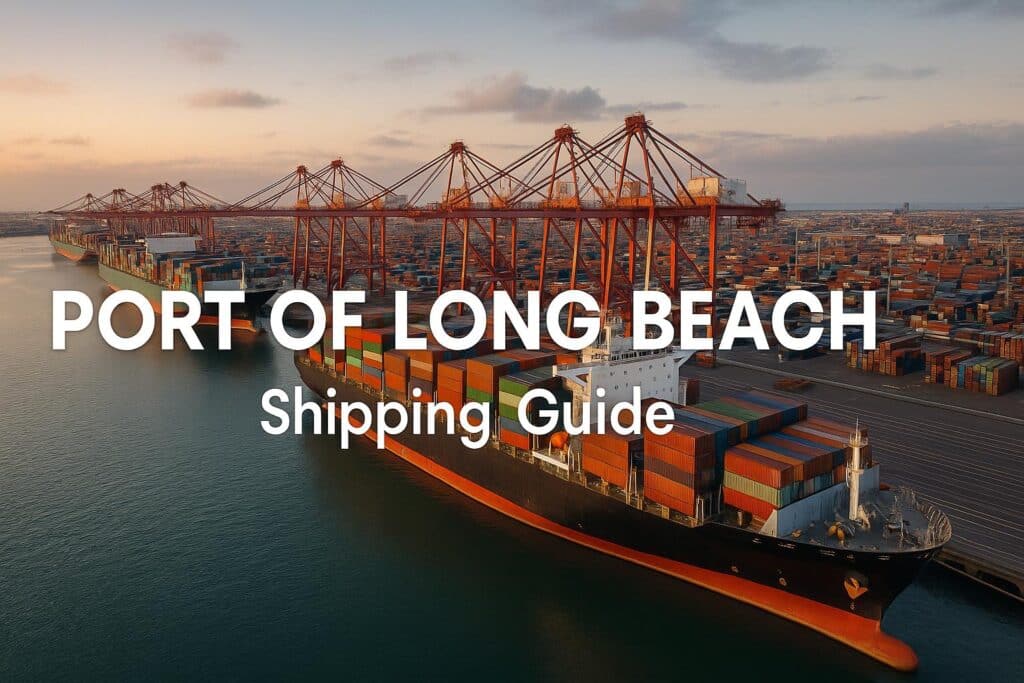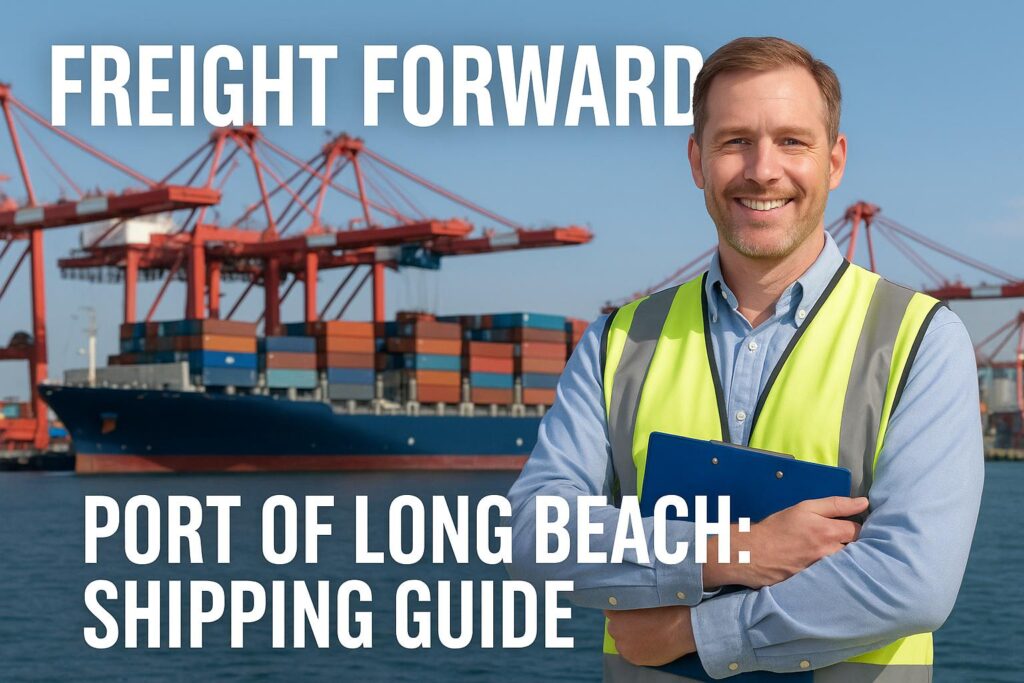The Port of Long Beach stands as a vital gateway for international trade, particularly between Asia and North America. Located in Southern California, this world-class port is known for its efficient container handling, state-of-the-art infrastructure, and seamless logistics operations. As one of the busiest ports in the United States, it plays a crucial role in global commerce—moving millions of containers and supporting businesses of all sizes.
Whether you’re managing a global supply chain or just beginning your international shipping journey, understanding the logistics process at the Port of Long Beach can help you reduce costs, improve efficiency, and avoid potential delays. This comprehensive guide will walk you through the port’s services, processes, and strategic advantages.

Why Ship Through the Port of Long Beach?
Shipping through Long Beach comes with numerous benefits for importers and exporters alike:
- Advanced technology: Automated cranes, tracking systems, and digital tools help streamline cargo movement.
- Proximity to major distribution centers: Its location near Los Angeles provides fast access to large consumer markets.
- Efficient logistics: From container ship unloading to intermodal transfers (truck and rail), every step is optimized.
- Strong reliability: Long Beach consistently ranks high for operational efficiency and low congestion compared to other ports.
- Environmental compliance: The port leads in green shipping, with sustainability initiatives supporting cleaner operations.
By leveraging these strengths, businesses can enhance their global reach, streamline operations, and mitigate shipping challenges.
Port Infrastructure and Container Terminals
The Port of Long Beach boasts one of the most advanced port infrastructures in the world. It features multiple container terminals equipped with modern loading cranes, automated systems, and digital monitoring tools. These capabilities enable efficient loading and unloading of container ships, improving turnaround times and reducing congestion.
There are seven major container terminals at Long Beach, each capable of handling a vast range of cargo types—from general freight to oversized project shipments. These terminals are supported by on-dock rail yards and direct highway access, making it easier to move goods inland quickly.
To support growing logistics demand, the port continues to invest in infrastructure upgrades, digital transformation, and advanced technology to ensure long-term capacity and operational efficiency. Whether you’re handling small shipments or large volumes, the port’s facilities are designed to scale with your needs.
Step-by-Step Shipping Process at Long Beach Port
Navigating the shipping processes at the Port of Long Beach involves multiple stages, each critical for ensuring a smooth transaction. Here’s a simplified breakdown of how your goods move through the port:
- Booking with a Freight Forwarder
Partnering with an experienced logistics provider helps streamline the entire logistics process and avoid unnecessary delays. - Container Loading at Origin
Your cargo is packed, palletized, and loaded into containers—typically at warehouses or distribution centers in Asia. - Ocean Transport via Container Ship
Vessels travel from ports in China, Vietnam, or South Korea and arrive at Long Beach port—a journey that usually takes 12–18 days. - Port Arrival and Unloading
Once the vessel docks, containers are offloaded using automated cranes. This stage benefits from efficient container handling that reduces processing time. - Customs Clearance and Inspection
U.S. Customs and Border Protection conducts inspections. Ensuring correct documentation helps avoid potential delays and penalties. - Inland Transportation
After clearance, goods are transferred via truck or rail to their final destination. Nearby distribution centers in California ensure fast delivery.
By following these stages carefully and working with trusted logistics companies, businesses can navigate the complexities of international shipping with confidence.
Common Shipping Routes to Long Beach from Asia
The Port of Long Beach serves as a primary entry point for trans-Pacific trade, especially from East Asia. The most frequently used shipping routes originate from:
- China (Shanghai, Ningbo, Shenzhen, Qingdao)
- South Korea (Busan)
- Vietnam (Hai Phong, Ho Chi Minh City)
- Japan (Tokyo, Yokohama)
These routes are part of regular container ship schedules operated by global ocean carriers. The average transit time ranges from 12 to 18 days depending on the port of origin and shipping method (direct vs. transshipment).
The port’s strategic location in Southern California ensures easy access to major commercial markets in the U.S. west coast and beyond. Once the cargo arrives, it is either distributed locally or moved inland via rail or trucking.
Freight Rates and Cost Factors
Shipping costs through the Port of Long Beach can vary based on several factors:
- Container Type & Size: Standard 20ft and 40ft containers are priced differently. Special cargo (e.g., reefer, out-of-gauge) may cost more.
- Seasonal Demand: Rates increase during peak seasons (e.g., back-to-school, holidays).
- Port Fees and Surcharges: Including terminal handling charges, fuel surcharges, and security fees.
- Customs Inspection Costs: Delays or manual inspections may incur additional charges.
- Destination and Inland Freight: The further your final delivery location, the higher the costs for domestic transport.
Working with a professional freight forwarder helps you understand all cost factors and make informed decisions. More importantly, they can help you reduce costs by selecting optimized routes, consolidating cargo, and avoiding potential delays.
Explore more shipping guides:
How Much Does It Cost to Ship from China to the USA?
Shipping from China to Los Angeles
Top East Coast Ports in the USA (2025 Guide)
Key Ports for Logistics from China to the USA
Ocean Freight Transit Time from Shanghai to Seattle in 2025

How to Reduce Costs and Improve Efficiency
If your goal is to optimize the logistics operations and control expenses, here are practical strategies to consider:
- Partner with Reliable Logistics Providers
Partnering with experienced freight forwarders ensures smooth coordination, accurate documentation, and better reliability. - Use Full Container Load (FCL)
When volume allows, FCL is often more cost-effective than LCL (Less than Container Load) because it avoids shared space and additional handling. - Plan for Peak Seasons
Book space early to avoid congestion surcharges and space shortages during high-demand periods. - Leverage Nearby Warehousing
Utilizing distribution centers near Long Beach can help speed up delivery and reduce final-mile shipping charges. - Ensure Customs Compliance
Accurate HS codes, commercial invoices, and shipping documents help avoid costly delays or detentions.
These approaches not only help you control shipping costs but also enhance logistics efficiency and support a more predictable supply chain.
Environmental Regulations and Port Compliance
The Port of Long Beach is widely recognized for its environmental leadership. As part of California’s broader clean air initiatives, the port has implemented strict compliance requirements and invested in sustainable infrastructure.
Some key efforts include:
- Shore Power Requirements: Vessels must plug into shore-side electricity while docked, reducing emissions.
- Clean Trucks Program: All trucks entering the port must meet EPA standards.
- Zero Emission Cargo Handling Equipment: The port is shifting toward fully electric cranes and vehicles.
These policies not only protect the environment but also ensure that logistics operations remain sustainable and future-ready. Companies partnering with Long Beach benefit from its commitment to both operational and environmental performance.
Choosing the Right Freight Forwarder for Long Beach Shipping
Finding a qualified freight forwarder is essential when navigating complex shipping processes. An experienced partner can:
- Coordinate with port authorities and shipping lines
- Help you avoid potential delays
- Provide real-time tracking and visibility
- Offer access to warehousing and distribution centers
- Support with customs compliance and documentation
Look for forwarders with local expertise in Long Beach port logistics, strong carrier relationships, and the ability to offer value-added services such as cargo insurance, container drayage, and inland delivery.
Frequently Asked Questions (FAQs)
What types of cargo does the Port of Long Beach handle?
The port manages a wide range of goods including consumer products, electronics, auto parts, machinery, and perishables.
How can I check if my shipment has arrived?
Your freight forwarder will provide container tracking and Estimated Time of Arrival (ETA). You can also use the port’s online cargo tracking tools.
Are there delays at Long Beach Port?
The port has made significant progress in reducing congestion, but minor delays may occur during peak periods or customs inspections.
How do I reduce my shipping costs to Long Beach?
Use FCL where possible, plan shipments in advance, and work with experienced logistics partners to streamline operations.
Can I store my goods at the port?
Yes. Long Beach offers warehousing and transloading services near the terminal area to facilitate distribution.
Work with a Trusted Partner for Long Beach Shipping
Whether you’re moving bulk containers, sensitive equipment, or eCommerce goods, the Port of Long Beach offers the scale, reliability, and technology to support your success. From advanced infrastructure to sustainable operations, it remains a top choice for U.S.-bound sea freight.
At Tonlexing, we help businesses like yours manage every aspect of their international logistics—from booking and documentation to cargo handling, customs clearance, and inland delivery.
Contact us today for expert support with your next shipment to or from Long Beach.

